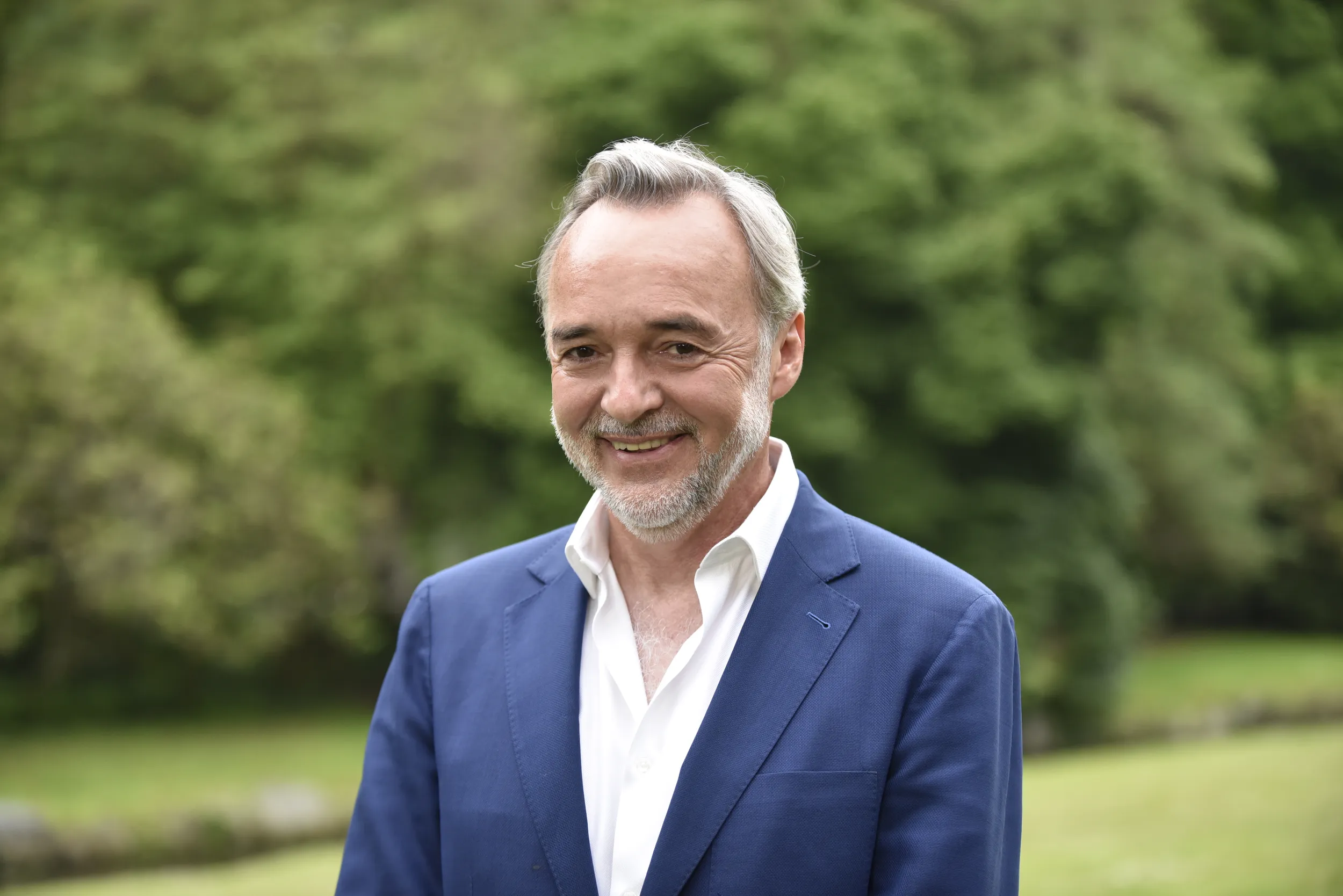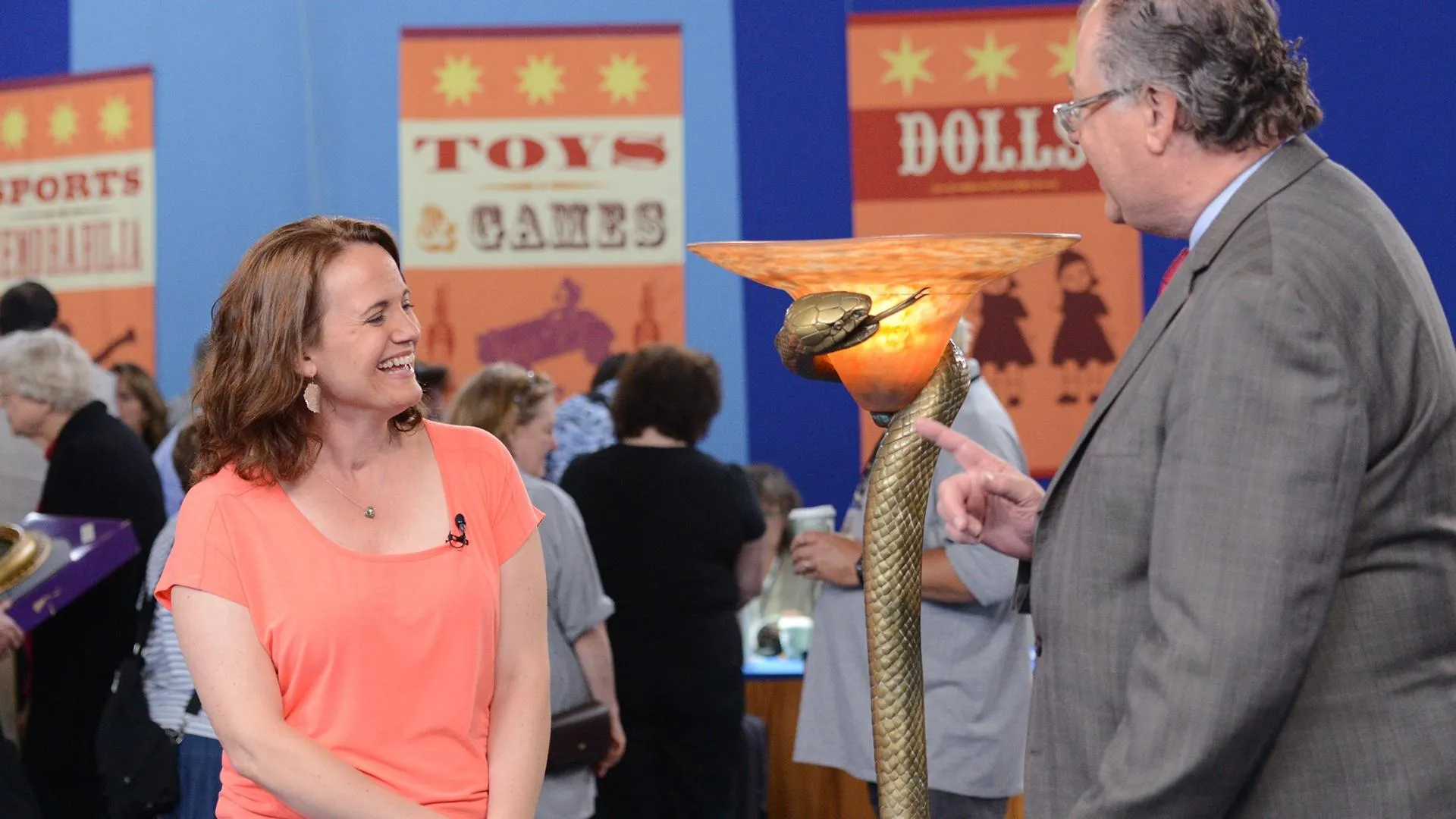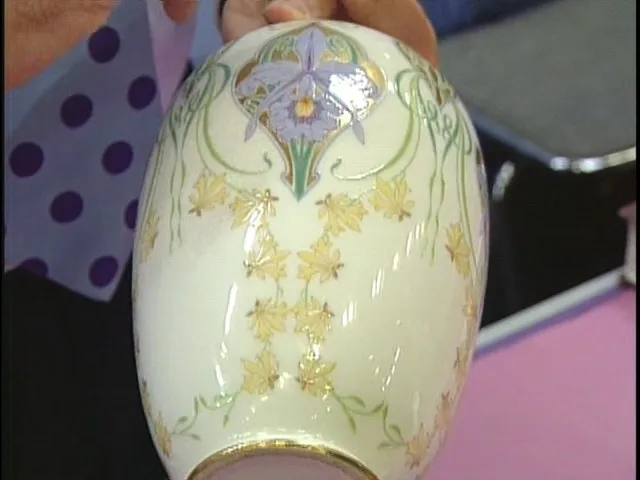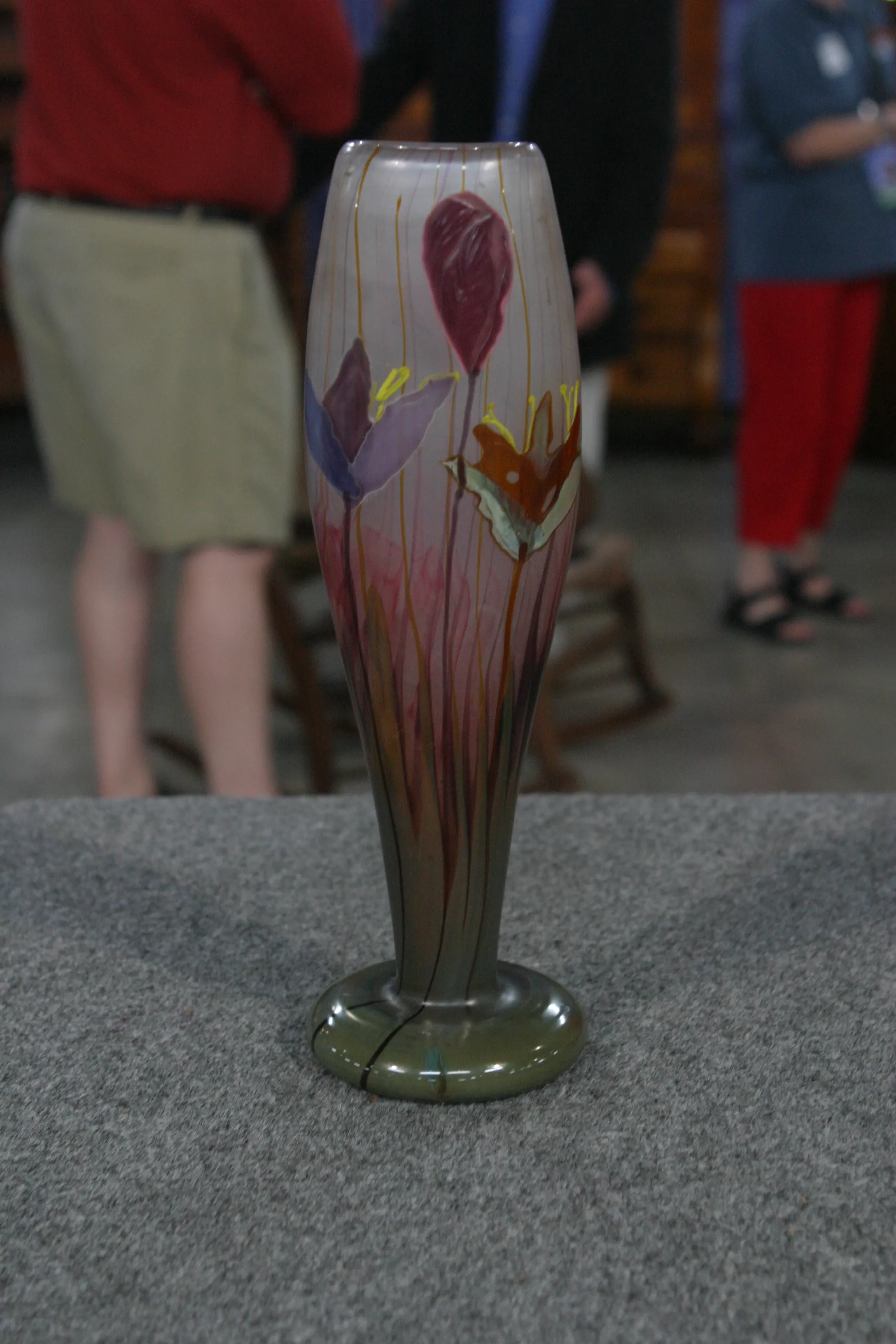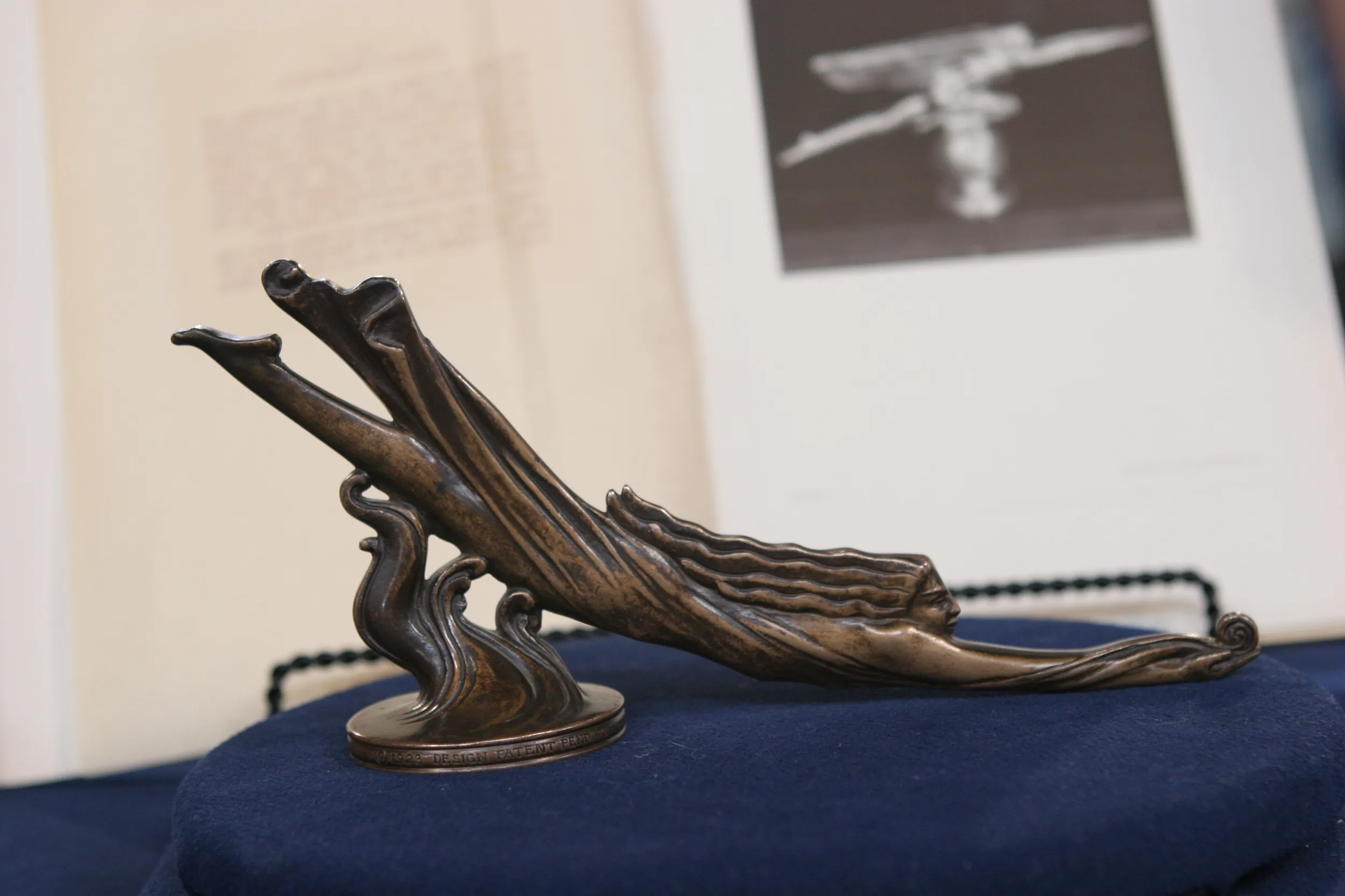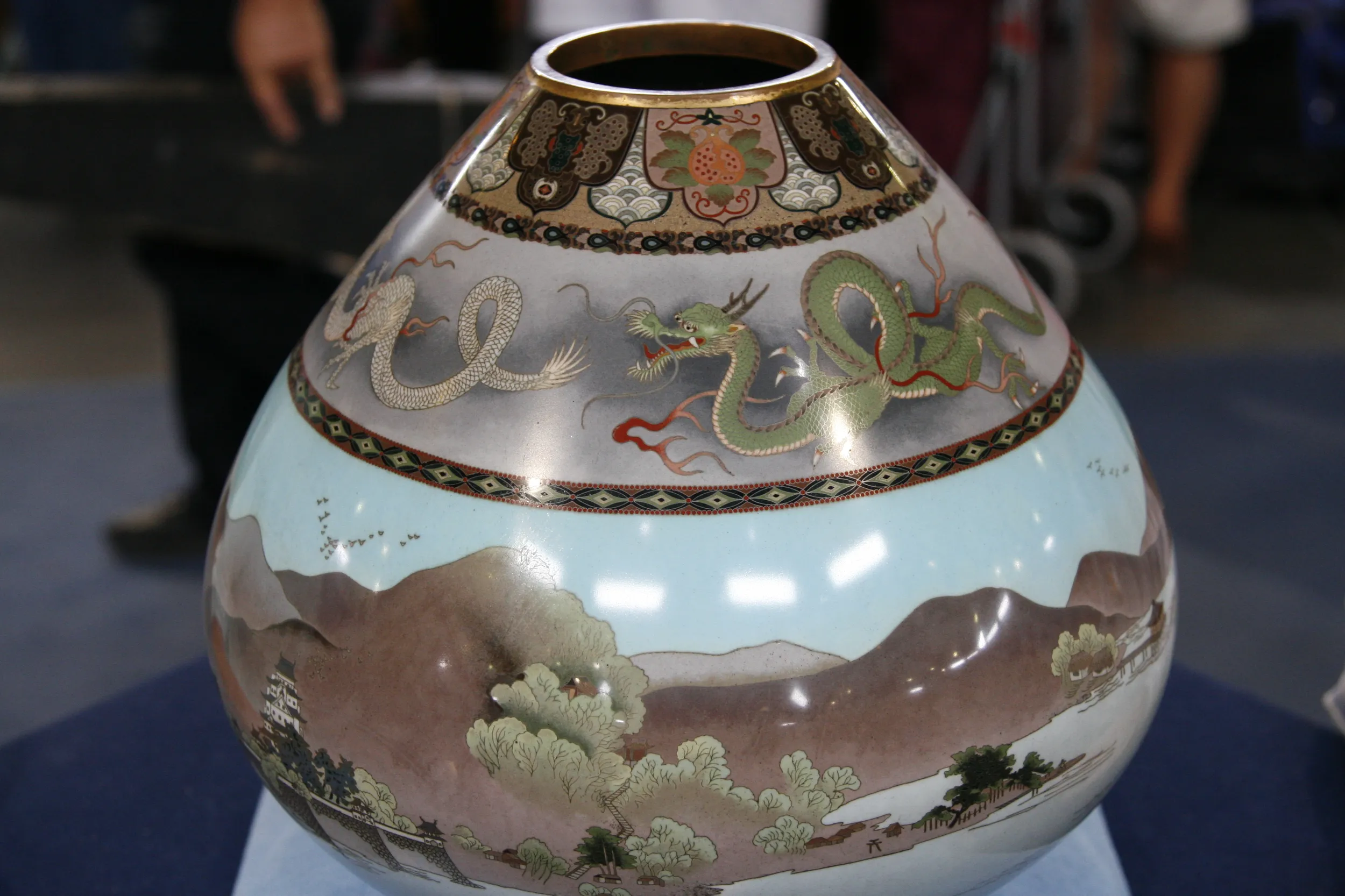GUEST: I started collecting this stuff in the '60s, find it here and there, a couple pieces at auction, but I haven't collected for over 30 years, so...
APPRAISER: First of all, it's porcelain of a very thin, high-quality nature that we call eggshell porcelain. And it's the specialty of a Dutch company called Rozenburg, who were based in the Hague in Holland. Like a lot of companies at the time, they believed in marking it and used a quite comprehensive marking system. First of all, it tells us it's made by Rozenburg in the Hague-- "Den Haag." It also has a little mark here, kind of a bee, which is a date symbol, and from year to year, these symbols changed. This one tells us 1899 or 1900. Next to that, we can see a little kind of window they call it there, that little cross-hatch mark. That's the approval mark. It means that the artistic director has looked at this in the final stage of production and said, "Thumbs up, this is a good piece." And you'll see the little number there, "1644." That's what the factory called the work order number. And here, we can see the monogram of the artist who decorated it. This is Samuel Schellink, and Schellink was perhaps the best-known of the artists around this time and very active about 1900. The word I often use for Rozenburg is "exquisite." The quality of everything is just very, very fine, and they all seem to date to between the mid-1890s to the early 20th century. Do you have a favorite piece here?
GUEST: This one here.
APPRAISER: This little vase? You have good taste. I think this is the most valuable one. The form is exquisite. The form and the decoration were the result of two different people, so there's a lot of artistry here. It's painted with wisteria, and on one panel at least, this spider in a web. What you've got is really the best example you'll find of the Dutch Art Nouveau movement. The company itself was founded in the early 1880s and closes during World War I, so it spans the entire period, really, of the Art Nouveau movement. And the tradition of Art Nouveau in Holland is a little different than it was further south, into France, where it all started, and other parts of Europe. I love the plate in the middle with those two exotic birds. Just a real tour de force of painting. And you bought them in the 1960s and '70s?
GUEST: Mm-hmm.
APPRAISER: Could you tell me, for instance, what you paid for this one?
GUEST: That one was the most I paid, and I paid $1,200 for it. And I ate Top Ramen for a month because it was a lot of money then.
APPRAISER: Well, I think you made an excellent investment. Rozenburg is very highly respected, very highly collected, and it's very fragile, so it tends to break. There's sort of less and less of it all the time. A low estimate for this vase, at auction, would be $4,000 and a high of $6,000. Do you remember what you paid for the other items?
GUEST: You know, I really don't. The only one, the small saucer, I paid $120.
APPRAISER: I'd say this little vase, certainly a low estimate of $2,000 and a high of $3,000. This piece I would give a low estimate of $3,000 and a high of $4,000. The two little vases, I'd probably give low estimates of $1,500 each, and with a high of perhaps $2,500. And the least valuable piece is the little piece in front of you. It's a saucer, and it would have had a cup on it. I would put an estimate of $500 on that.
